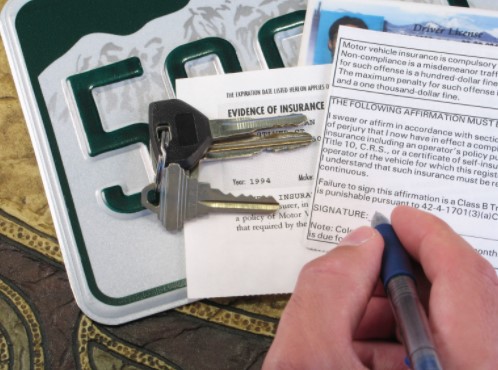How to register your vehicle in another state.

If you move to a new state, you will usually need to register your car in that state if you own and drive one. Each state has its own rules and regulations regarding how soon a car must be registered and what documentation is required, to complete the process there will also be fees involved. Register your vehicle after moving by gathering all of the paperwork, insurance and information required to get new license plates for your car. Make sure you are being legal while doing this, gather the necessary information and contact your new state’s Department of Motor Vehicles. Some states may call the regulating agency the Department of Motor Vehicles DMV, the Registry of Motor Vehicles RMV, the Department of Transportation DOT, the motor vehicle Bureau or some other similar name. Do a quick internet search for the name of your state and car registration and you should find the information you need to get to their website. For example, if you live in California you will find the website for the California Department of Motor Vehicles DMV, if you have just moved to New Hampshire the agency is the Division of Motor Vehicles, in Massachusetts for example the office is the Registry of Motor Vehicles. Find out about your deadline when you move into a new state, you generally must register your car in the new state within a certain time frame, this may be as short as 30 days or less. For example, the website for the Washington State Department of Licensing says that you must register your car in the state within 30 days of moving, in many states you must get a new driver’s license within your new home state, either as part of registering the car or before you can register the car.
Gather the information and documents. Each state will have different requirements for registering your vehicle, when you find the website for your new DMV, you should be able to find a list of requirements for registration. Some of the most common requirements include your identification, you will need to demonstrate some government-issued identification that shows that you match the owner of the vehicle and this may be your driver’s license, passport or some other state issued identification. Also, you will definitely need to provide proof of ownership, some proof that you are the owner of the vehicle, this is most likely going to be the title certificate. Although you may be able to present your registration from your previous state, if you still owe money on a loan the lender probably is holding the certificate of title, you will at least want to check with the DMV on how to proceed in this case, you can probably get a certificate or statement from the lien holder to verify title ownership odometer disclosure statement. In some states you merely need to provide the odometer reading on your own, in other states you may need to take your vehicle to a state approved location and have an odometer reading and certified emissions disclosure statement.
Another requirement several states like California will ask for is an emissions certificate (smog), even if you have this certificate in your prior state you must get a new certification if you move into California. Another requirement is the bill of sale, particularly if you have purchased your car recently you may need to show some extra proof of purchase. Regarding the proof that your vehicle is insured, contact either the DMV or your own insurance company to find out what form of proof is required for a vehicle registration, your insurance company may have a simple form or certificate that they can provide, you may need to have a particular DMV form stamped by your insurance company, plan ahead because getting this paperwork may take a few days. Another requirement is to get your vehicle inspected, in some states you may need a cursory safety inspection while other states will require a multi-stage inspection that includes both vehicle operation and emissions or smog certification, find out your state’s requirements and leave yourself enough time to get it done. When your car passes each stage of the inspection you should get a certificate of some sort, make sure that you have this available for the registration.
